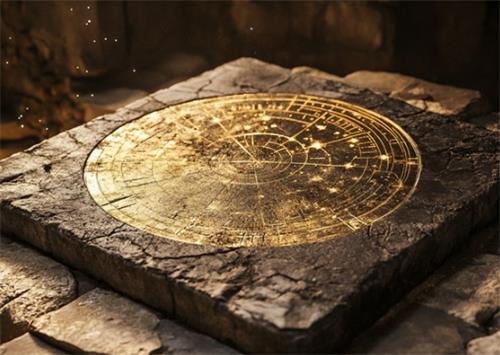
Approximately 2,150 years ago, at the site of Nineveh, the ancient capital of Assyria (now located in modern - day Iraq), archaeologists made a remarkable discovery. Among the ruins, they unearthed a circular clay tablet. Adorned with Sumerian pictograms that illustrated the night sky, the tablet also featured ancient inscriptions. For numerous centuries, the meaning behind these symbols eluded scientists, remaining an enigma. However, in 2008, a breakthrough occurred. Alan Bond and Mark Hempsell, two researchers from the University of Bristol, managed to crack the code. Their successful translation of the pictograms finally brought to light the long - hidden astronomical secrets preserved on the ancient tablet.
According to their interpretation, the tablet records the observations of a Sumerian astronomer, particularly detailing the night sky as seen in 3,123 BCE (according to the Roman Julian calendar). The translated text describes detailed astronomical phenomena, including the trajectory of the Pisces constellation and an asteroid impact event. Notably, the text references a specific date—June 29, 3,123 BCE—providing modern astronomers with valuable historical data for celestial event analysis.
One of the most astonishing revelations from the tablet is its depiction of an asteroid seemingly colliding with Earth along an unusual trajectory within the Pisces constellation. The impact location is identified as present-day Köfels, Austria—home to the largest rockslide formation in the Alps. However, modern scientists have found no evidence of a typical impact crater in this region, seemingly contradicting the tablet's account.
Analysis of the pictograms revealed that the asteroid approached Earth at an extremely shallow angle of approximately six degrees. In other words, the impact was relatively gentle, preventing the formation of a conventional crater. Further investigation suggests that before its final collision with Earth, the asteroid first struck the Gamsskogl mountain range along its trajectory.It is highly probable that the initial impact led to the asteroid detonating in the atmosphere. As a result of this mid - air explosion, the asteroid's energy was dispersed, which in turn prevented the formation of the crater that would typically be expected.
This groundbreaking study not only sheds light on the astronomical achievements of the Sumerians but also provides a fresh perspective on some of history’s unresolved cosmic mysteries.
The ancient clay tablet serves as a testament to how early civilizations meticulously recorded and predicted celestial events through sky-watching. These findings are of great significance to modern astronomy and geology, proving that ancient civilizations possessed extraordinary knowledge in observing and documenting natural phenomena.
The pictograms on this ancient tablet open a gateway to the astronomical wisdom of the past. By deciphering these ancient records, we gain deeper insights into Sumerian stargazing techniques and uncover mysteries that modern science has yet to fully resolve.

Scientific experiment
A Plastic Plate Shut Down This Lab for 79 Days
In criminal investigations, DNA plays an indispensable role, helping scientists identify suspects through genetic material found in cells.

Science,Energy
The Mysterious Halo: Science Unveils the Invisible Energy World Surrounding Our Bodies
In many artistic works, deities or Buddha figures are often depicted with halos above their heads, symbolizing sanctity and divinity.

Elizabeth,Browning
From Sickbed to Wedding: The Miraculous Love of Elizabeth and Browning
In 1845, British poetry witnessed a remarkable moment—Elizabeth Barrett, a poet long confined to her sickbed, finally emerged as a shining star in the literary world.


